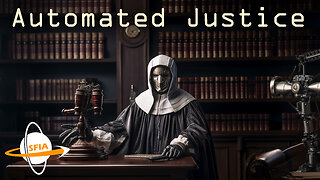The Crucible as a Modern Tragedy | Arthur Miller
The setting of "The Crucible" is of historical context as the trial of Salem was conducted in the late 17th century yet the play is often considered a modern tragedy. Let's first know what is a modern tragedy.
Characteristics of Modern Tragedies.
The storytelling form of modern tragedy emerged in the 19th and 20th centuries. Besides dramatists, many novelists adopted this genre of writing. Some common characteristics of modern tragedy are.
Ordinary protagonist.
Modern Problems.
Internal conflicts.
No divine intervention.
Ambiguous ending.
The Crucible as a Modern Tragedy.
The Crucible may be listed somewhere in the list of modern tragedies as it fulfils some of its common attributes. Let's analyse the play while keeping the said characteristics in mind.
Ordinary Protagonist.
John Proctor is indeed an ordinary protagonist as he does not belong to a noble class but the working class of Salem. He is a farmer by profession. He does not hold any special position in the vicinity. In the past, he committed adultery with Abigail Williams. Hence, he is not a perfect person but a common man. The play "The Crucible" fulfils this requirement of a modern tragedy.
Modern Problems.
Most of the themes of the play are related to modern problems with which hysteria and mass panic are at the top of the list. Many innocent individuals were prosecuted due to the false allegation of witchcraft.
Another problem which the writer highlights is abuse of power. The major characters who abuse their powers are Deputy Governor Danforth and Judge Hathorne.
The play also condemns the act of false accusations. Elizabeth Proctor and Rebecca Nurse, face false accusations just because of the ulterior motives of the accusers.
Thus, hysteria, abuse of power and false accusations are modern societal problems which the playwright portrays in the tragedy "The Crucible".
Internal Conflicts.
John Proctor is unable to forget his past of committing adultery with Abigail Williams due to which there is a conflict in his mind.
Reverend Hale reaches the town with a strong faith in witches. However, when he sees the proceedings of trials and executions of innocent people, he begins to question its validity. Thus, there is an inner conflict in his mind with respect to the existence of witches and the proceedings of the court.
Elizabeth Proctor also struggles internally while dealing with her husband's affair. She cannot decide whether to forgive him and rebuild their marriage or hold onto her resentment.
Mary Warren is another character who faces the conflict of loyalty being the servant of John Proctor. Thus, these conflicts prove that the modern tragedy "The Crucible" deals with internal conflicts.
No Divine Intervention.
In "The Crucible" John Proctor himself is responsible for his downfall. Firstly, he had an affair with Abigail Williams in the past. He maintains his relationship with Abigail which gives her an opportunity to accuse his wife of witchcraft.
Secondly, John Proctor chooses not to disclose his relationship with Abigail. He hides the truth to save his name. This act of John Proctor causes the execution of many innocent lives.
Proctor's pride also contributes to his downfall. He refuses to sign his confession as he sees it as an admission of guilt in addition to a stain on his name.
These incidents prove that no one but John Proctor himself is responsible for his downfall. There is no role of gods or supernatural forces. It is also a common ingredient of modern tragedy, that "The Crucible" fulfils.
Bleak Ending.
The play ends unexpectedly. Justice has not been served. The classical tragedies are complete and cause the catharsis of pity and fear. However, modern tragedies leave questions in the minds of the audience.
In the final act, John Proctor is left with two choices. Either confess to witchcraft and live a life of an accused or deny and accept execution. Proctor denies signing a false confession. The audience is left with feelings of unending societal problems at the end.
The final stage direction of the play describes the scene as the "space" of the Salem meetinghouse. It is a symbol that the writer uses willingly to illustrate the aftermath of the tragedy and the emptiness. No character is there on the stage and the space is empty which creates a desolate atmosphere of the ending.
Read more at:
https://askliterature.com/drama/the-crucible-as-a-modern-tragedy-arthur-miller/
00:00 - Introduction
00:30 - Characteristics of Modern Tragedies
00:45 - The Crucible as a Modern Tragedy
01:00 - Ordinary Protagonist
01:30 - Modern Problems
02:17 - Internal Conflicts
03:11 - No Divine Intervention
04:10 - Bleak Ending
05:07 - Conclusion
-
 51:31
51:31
Science & Futurism with Isaac Arthur
22 hours agoAutomated Justice
8602 -
 28:23
28:23
TampaAerialMedia
21 hours agoMiami Travel Guide - Downtown, Key Biscayne, Coral Gables
1601 -
 8:05
8:05
Ethical Preparedness
15 hours agoEASY Homemade Allergy Medicine - Medical Prepping for SHTF - Natural Medicine
108 -
 20:48
20:48
JoBlo Originals
1 day agoWhat Happened to WES STUDI?
11.2K6 -
 57:54
57:54
Proof Bread
23 hours agoSwabian Pretzels the Sourdough Way
18.7K6 -
 5:45
5:45
RealReaper
1 day agoThe Gay Black Doctor Who The Devils Chord Sucks
20.7K38 -
 34:35
34:35
Chrissy Clark
1 day ago $0.07 earnedCan Conservatives Believe In Climate Change?
22.9K49 -
 8:35
8:35
America Uncovered
15 hours agoYou Won’t Believe Who’s Defending Donald Trump Now…
12.7K14 -
 32:24
32:24
Praxis Homesteading and Survival Skills
1 day agoThe Most Valuable Post SHTF Barter Item
18.3K12 -
 1:04:07
1:04:07
Trumpet Daily
1 day ago $1.81 earnedHot Take for the Regime: Michael Cohen Has No Credibility - Trumpet Daily | May 17, 2024
20.4K13